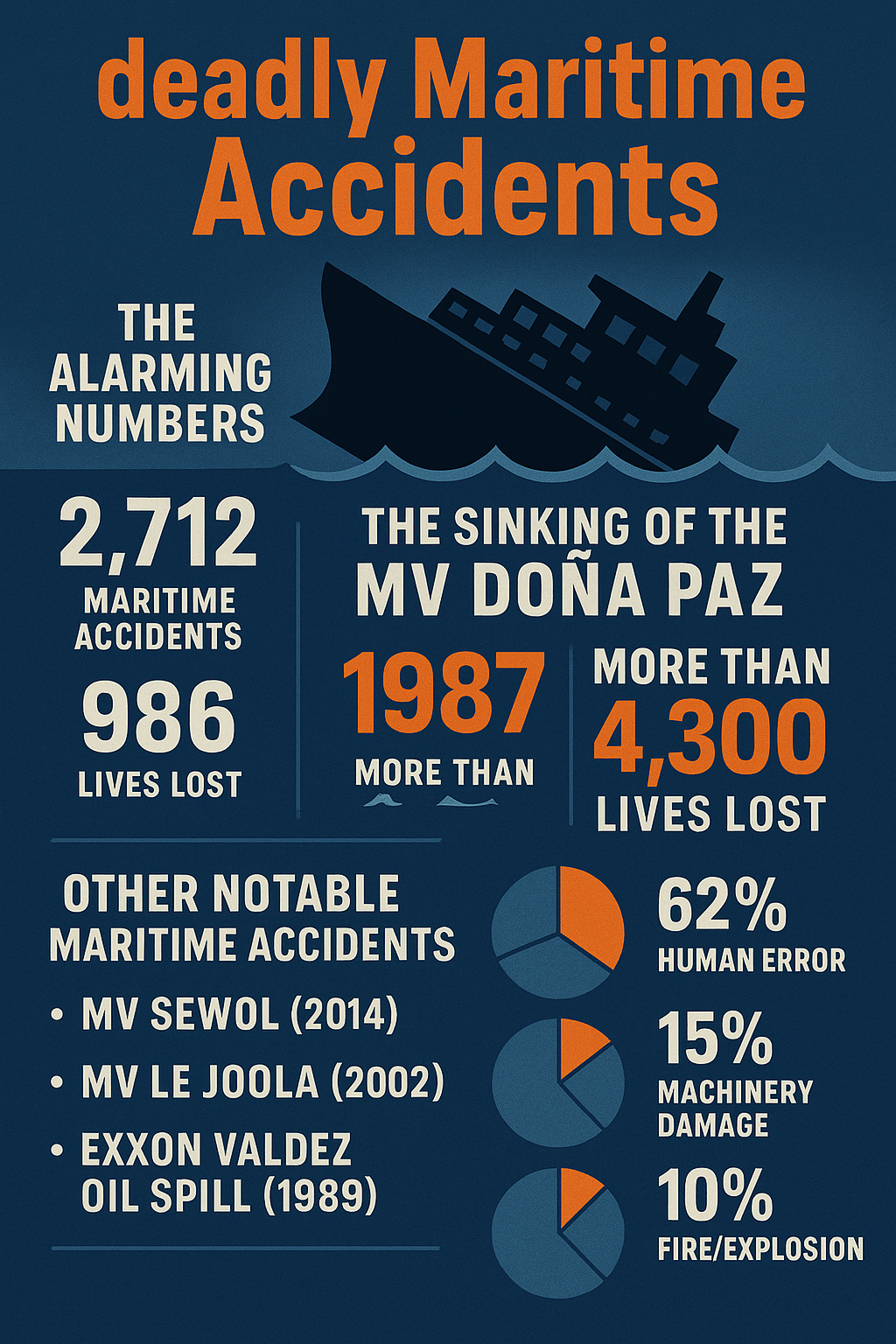Into the Dark Blue: Uncovering the Hidden Dangers of Maritime Accidents
The vast expanse of the world’s oceans has long been a source of fascination and fear. While maritime trade is the lifeblood of the global economy, the sea can be a cruel mistress. Maritime accidents have claimed countless lives, damaged ecosystems, and disrupted global supply chains. Let’s dive into the statistics and stories behind some of the most significant maritime accidents in history.

The Alarming Numbers
According to the International Maritime Organization (IMO), there were 2,712 reported maritime accidents in 2020 alone, resulting in 986 lives lost and over $1.4 billion in damages. The most common causes of these accidents include:
- Human error (62%)
- Machinery damage (15%)
- Fire/explosion (10%)
- Collision (6%)
- Weather-related incidents (4%)
The Sinking of the MV Doña Paz
One of the deadliest maritime accidents in history is the sinking of the MV Doña Paz in 1987. This Philippine-registered passenger ferry collided with an oil tanker and sank, resulting in the loss of over 4,300 lives. To put that number into perspective, it’s estimated that more people died in this single incident than in the Titanic disaster. The tragedy occurred on a routine journey, and many passengers were traveling home for the holidays. The exact number of fatalities may never be known, as many passengers were not registered. The incident highlights the importance of safety regulations and enforcement, particularly in regions with high passenger volumes.
Other Notable Maritime Accidents
- MV Sewol (2014): A South Korean ferry capsized and sank while carrying 476 passengers, mostly high school students, resulting in 304 deaths. The incident raised questions about safety protocols and emergency preparedness.
- MV Le Joola (2002): A Senegalese ferry capsized off the coast of Gambia, killing over 1,800 people. The tragedy was attributed to severe overcrowding and poor safety measures.
- Exxon Valdez Oil Spill (1989): While not a traditional maritime accident, this oil spill released millions of gallons of crude oil into Prince William Sound, Alaska, devastating the local ecosystem and wildlife.
Learning from the Past
Maritime accidents often result from a combination of human error, equipment failure, and adverse weather conditions. By studying these incidents and implementing stricter safety protocols, the maritime industry can reduce the risk of future accidents. Some key takeaways include:
- Improved safety training for crew members
- Regular maintenance and inspection of vessels
- Enhanced weather forecasting and warning systems
- Stricter regulations for passenger safety and cargo transport
Conclusion
As the world’s reliance on maritime trade continues to grow, so does the importance of prioritizing safety at sea. By understanding the causes and consequences of maritime accidents, we can work towards creating a safer and more responsible shipping industry. The stories of those who have lost their lives at sea serve as a poignant reminder of the importance of vigilance and preparedness.